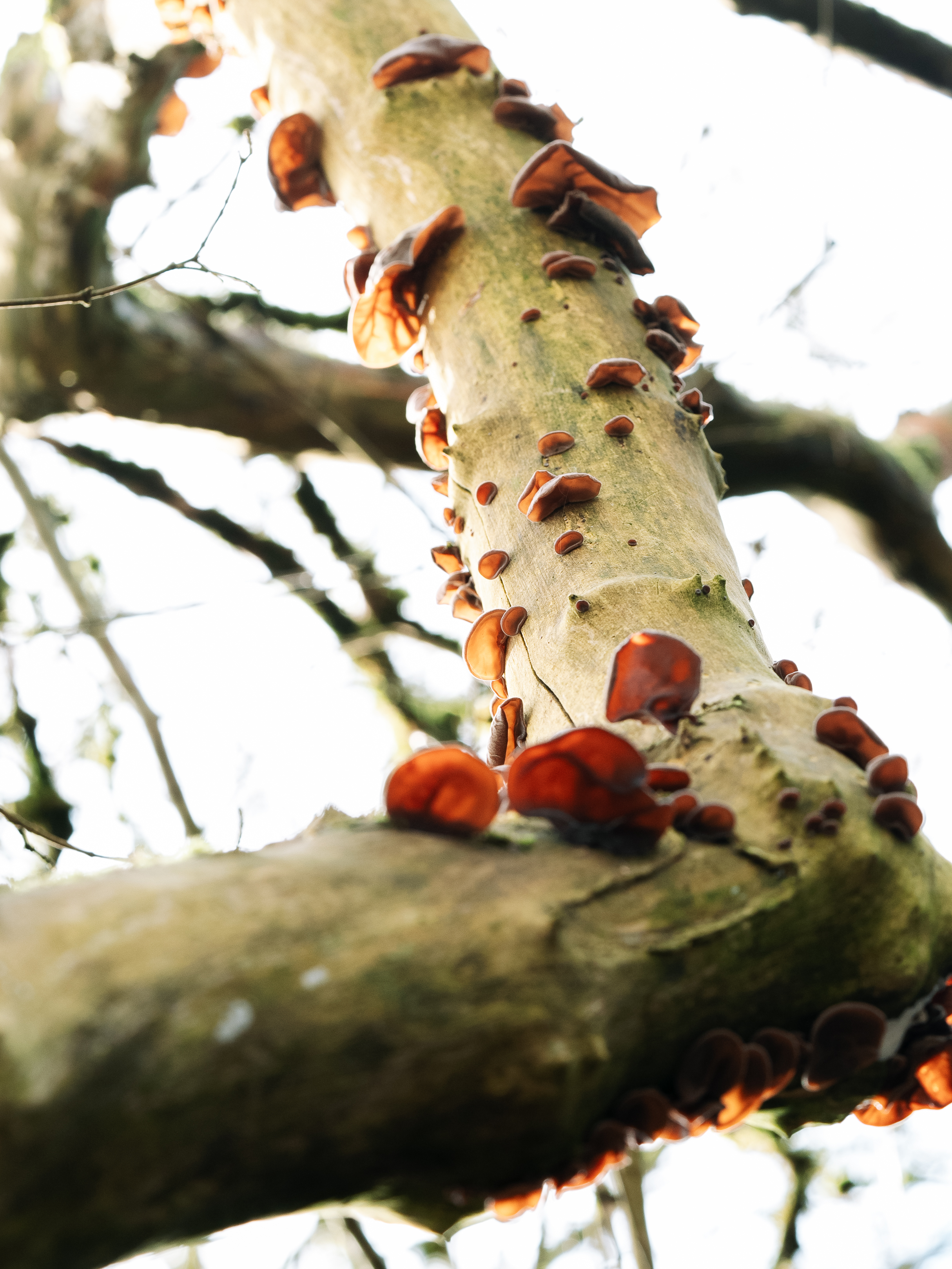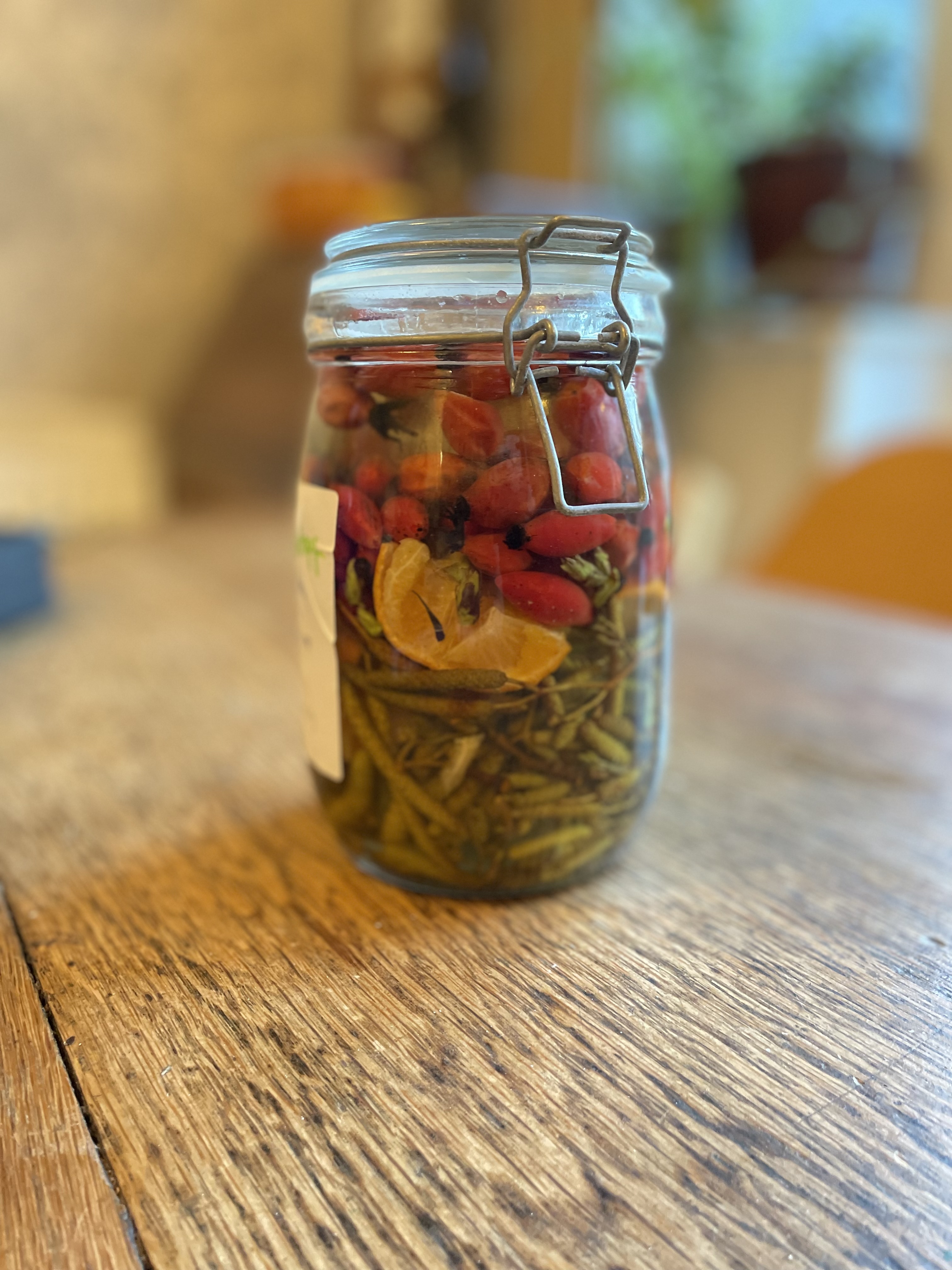
How To Fit Foraging Into Day-To-Day Life
Hi I’m Nick, SEN school horticulture teacher by day, professional forager by mid-to-late afternoon – it is too dark to forage at night!
People often think of foraging as a somewhat mythical thing with visions of people holding gingham-lined wicker baskets skipping off to the woods to pick mushrooms through dappled sunlight. I’m sure this is probably true for some people but, as someone who has a full-time job, two kids and various other commitments, it can be hard to find time for woodland frolicking (sigh). Instead, I simply incorporate it into my day by keeping an eye on my surroundings and if the opportunity presents itself you can pick a wild ingredient and add it to dinner when you get home.
Most of the wild edibles I pick are from an urban environment, in my case Greater Manchester, or spotted out and about doing whatever else besides foraging that I’m doing like taking the kids to football training or walking to work. Just last week, I found a fantastic chicken of the woods mushroom walking the youngest to school.
Don’t get me wrong: it would be hard for me to source coastal edibles in Manchester and I do make special trips to source certain things but my point is that not all foragers are Gandalf-esque characters roaming majestically through the wilderness grazing on whatever they find. But by arming yourself with the skills to be able to confidently identify wild edibles, you can complement your day-to-day meals with fresh, tasty, organic produce. It could be as simple as taking the kids to the park after school, noticing the elderflowers are in bloom and filling a bag to take home and make cordial (top tip, always have a foldable bag-for-life tucked somewhere ready for such random sightings!) or a family walk past a nice swathe of wild garlic and making pesto pasta for tea. The majority of wild food I source for my and my family’s personal use is a mix of what I know is available seasonally and either incorporating a trip out to where I know we can source it or literally stumbling upon it whilst out and about. I see myself as a kind of wild ingredient opportunist thief, ready to grab something delicious at a moment’s notice or at the very least make a mental note to come back when I can or when the wild food is ready! Why anybody buys apples in autumn is beyond me when there are community orchards everywhere stocked full of delicious produce just ready for the picking, free from pesticides and as fresh as you can get – they also store well, providing you don’t bruise them.

Social media tends to often paint a picture of foragers returning home with baskets full of pristine, top-notch edible mushrooms, all neatly stacked and ready to throw in the pot. The reality is very, very different and often mushroom missions see me come back empty-handed (and frequently quite wet). With this in mind, I tend to not make foraging the sole purpose of the trip but to incorporate it into the enjoyment of being outside. If you happen to find a chanterelle whilst out on a walk then all the better, but if not then you’ve enjoyed nature and done something healthy.
Social media also tends to portray all foragers as amazing cooks who, for example, after picking wild asparagus and morels will think nothing of whipping up a quick quiche from scratch (and rightly so as this is a beautiful thing but we’re not all chefs or let’s face it can’t all be bothered). Having led numerous foraging forays, the question I regularly get asked is “what do I do with it?” In all honesty, I tend to make dishes which don’t need a lot of preparation. I was fortunate to work for a Michelin-starred restaurant for a few years, growing and foraging various ingredients, and was truly blown away by what the chefs created with the ingredients I picked for them - they obviously tasted amazing but I’m not a chef and don’t pretend to be. Often I just don’t have the time or inclination to do more than fry my mushrooms in butter and serve them on toast (the BEST way to enjoy most wild mushrooms, by the way!). Practically all my foraged finds go into something simple and quick… and usually with a fried egg on top. Hogweed shoots get fried in butter, mushrooms get added to Bolognese, wild edibles get subbed in for other ingredients – especially something like wild garlic which is so versatile that it seems a shame not to use it as often as possible during its season. In fact, my favourite wild garlic recipe is two good handfuls of leaves, flash fried in butter for 30 seconds and served as a side dish – it takes the overpowering sting out of the garlic and compliments most dishes from curries to roasts.

Of course, not all foraged additions to the household meals are freshly-picked. By having an eye for wild spices and a bit of spare time to preserve a seasonal ingredient you can be adding the wild to your meals all year long. Dehydrated seaweed gets used instead of salt, alexanders seed instead of black pepper. Wild garlic salt gives an interesting flavour to almost anything. Wild raspberry vinegar or elderberry balsamic liven up a quick salad. Hogweed seeds, dry fried and blitzed in a blender makes an awesome porridge topper. And let’s face it, any fruit can be steeped in gin and enjoyed whenever the moment calls for it - sloes, damsons, cherries all make fantastic additions to cheap supermarket gin with a bit of sugar and stored for a few months. Not to mention the traditional method of dehydrating mushrooms when they gather a big haul. This process, if done correctly, means you can store them indefinitely and rehydrate them as and when. Even something as simple as freezing works wonders for later in the year - harvest larger wild garlic leaves at the end of the season, chop them finely and freeze them in batches for adding garlicky, spring-onion flavours to the base of any pasta dish or curry – can you tell I eat a lot of pasta and curry yet? 😊
If you too would like to be able to incorporate foraging into your day-to-day life, get yourself a few decent foraging books (best to ignore foraging apps) or, better still, book yourself on a Forage Box workshop. You are sure to see your confidence grow and you’ll be casually adding wild ingredients to your daily meals before you know it.






